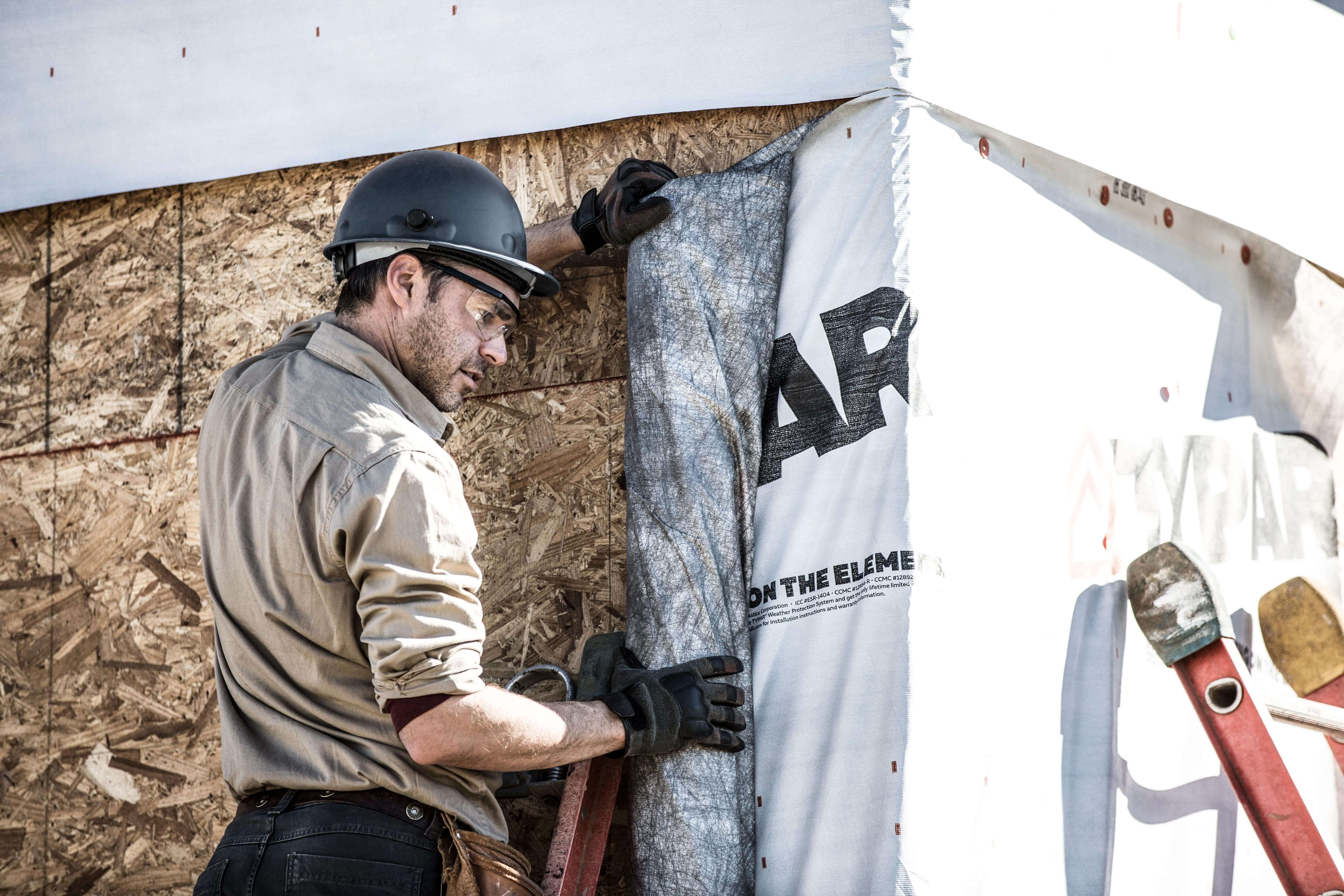
Some substances just aren’t friendly to housewraps. Pressure washing solutions can present a serious threat to the building wrap because they contain chemicals called surfactants, or surface-active agents.
Among the many performance characteristics to consider when choosing a building wrap, surfactant resistance is one that can be easily underestimated. However, builders and contractors who do not have at least a basic understanding of surfactants and how they impact the performance of building wrap could potentially jeopardize the long-term durability of the exterior wall assembly.
The problem with surfactants is that these contaminants promote the loss of water repellency, causing “wetting” of the building wrap surface. Once this occurs, water can more easily pass through the microscopic openings in the building wrap. Once moisture finds its way into the building envelope, it can threaten a building’s structural integrity, causing exterior surfaces to deteriorate. Bulk moisture intrusion can also support mold and rot that not only cause structural damage but also pose serious health hazards to building occupants.
Surfactants aren’t limited to just power washing solutions. Water soluble extractives in wood such as tannins, and wood sugars in redwood and cedar are other examples of surfactants that contaminate the surface of building wraps. These chemicals lower the surface tension of a liquid allowing it to penetrate deeper into the building wrap material, as well.
While surfactants are almost impossible to avoid altogether, some building wraps perform better against these pesky chemicals than others. If the wrap will be exposed to surfactants (and most will), builders should select a building wrap that is surfactant resistant. TYPAR BuildingWrap, MetroWrap and Drainable Wrap are all engineered with a specialized coating that resist surfactants. In fact, in third-party testing commissioned by The American Society of Heating, Refrigerating and Air-Conditioning Engineers (ASHRAE) showed that TYPAR resisted a power wash solution, while Tyvek Homewrap failed, permitting numerous droplets to form and wet the underlying OSB. The complete testing report can be found here.
Due to the vast amount of building wraps and moisture management products on the market, it is more imperative than ever that builders and contractors have the knowledge to make the right product selections to design and build wall systems that perform to today’s standards of high performance, durability and moisture control. TYPAR products do not merely meet standards, they set them, defining a premium level of defense that the competition simply doesn’t measure up to.
Contact TYPAR today to learn more about how building wraps can help improve occupant comfort and indoor air quality for your next multifamily project.